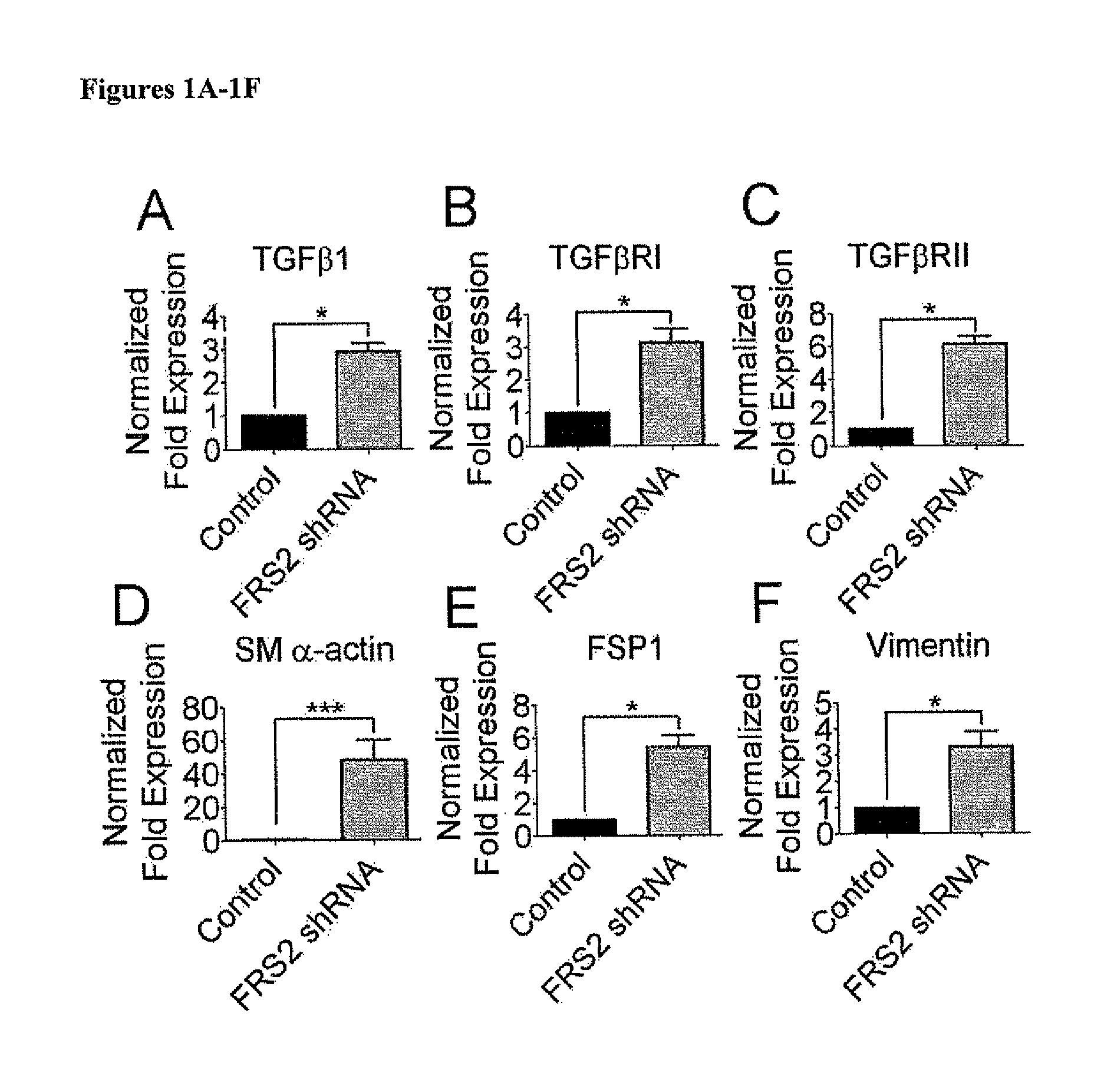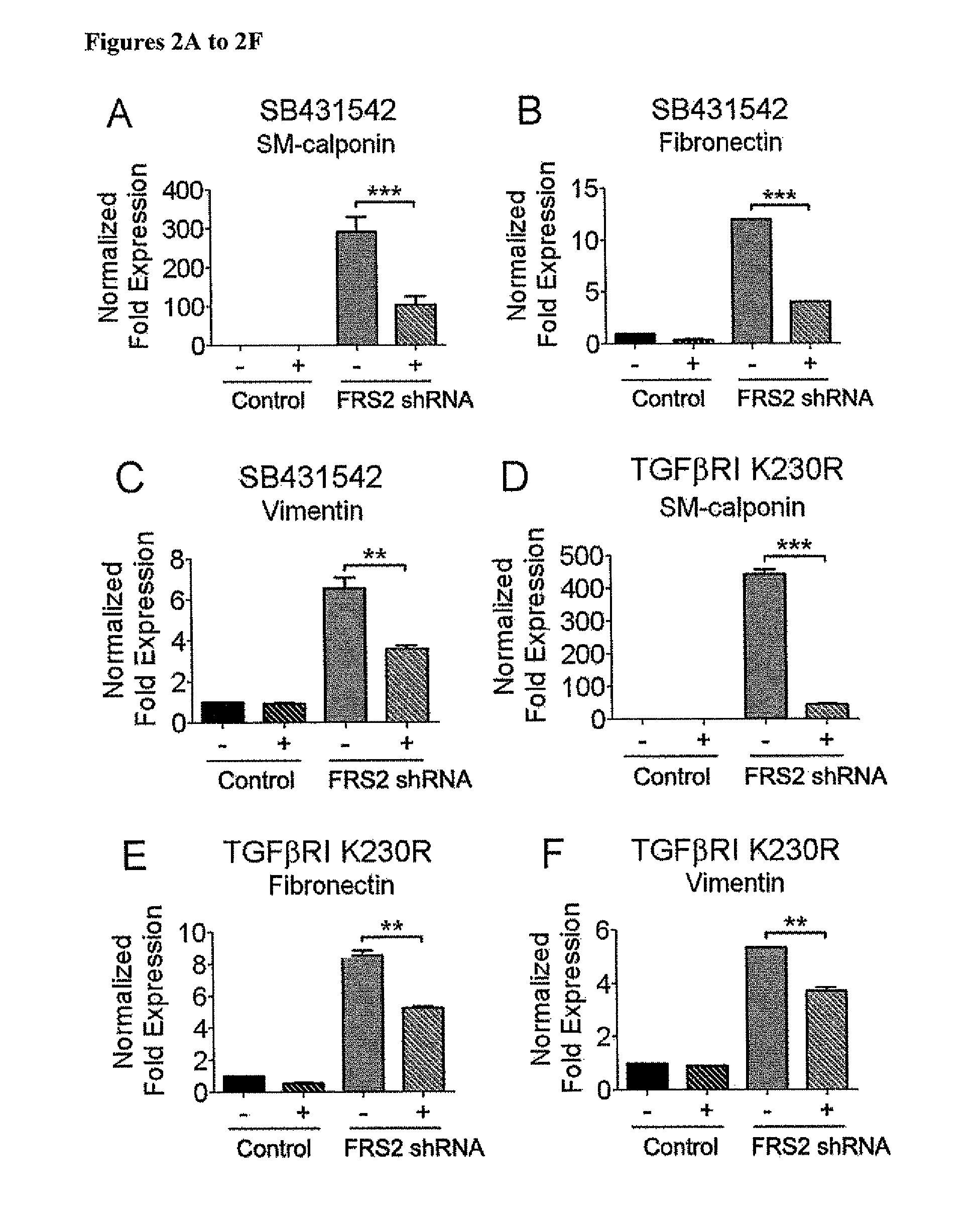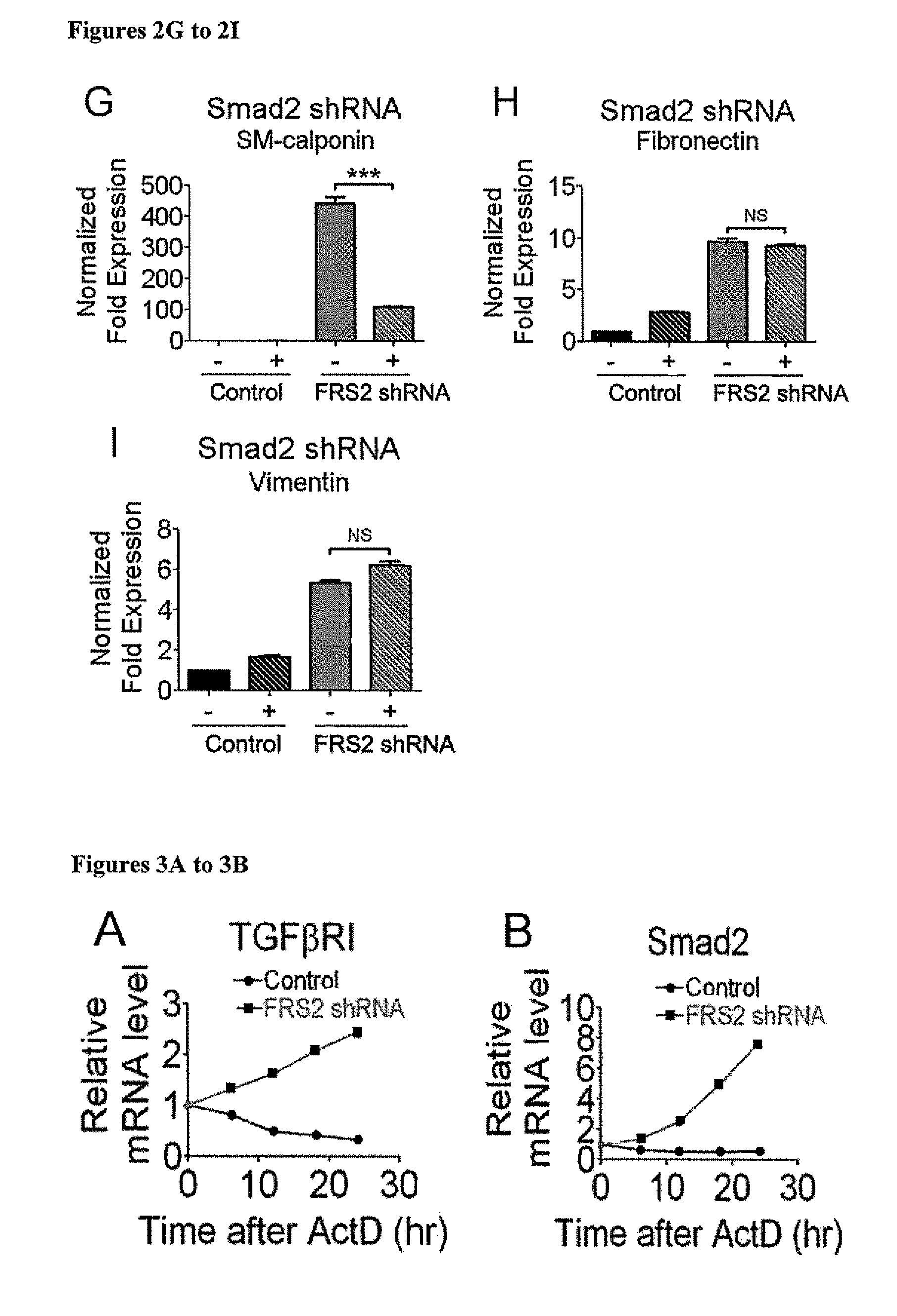Compositions and methods for treating and preventing neointimal stenosis
a technology of neointimal stenosis and compositions, applied in the field of vascular stenosis and restenosis, can solve the problems of increased risk of contamination, increased risk of cell dedifferentiation, and inability to obtain healthy autologous cells from diseased donors, and achieve the effect of increasing the patency of biodegradable, synthetic vascular grafts
- Summary
- Abstract
- Description
- Claims
- Application Information
AI Technical Summary
Benefits of technology
Problems solved by technology
Method used
Image
Examples
example 1
Basal FGF Signaling Suppresses TGFβ-Mediated Endo-MT
[0145]Materials and Methods
[0146]Cell Culture and Reagents
[0147]Human 293T T17 cells (ATCC CRL-11268) were maintained in Dulbecco's modified Eagle's medium (Gibco) with 10% fetal bovine serum (Invitrogen) and penicillinstreptomycin (Gibco). Primary human mammary epithelial cells (HuMEC, Invitrogen), were maintained in HuMEC basal serum free medium with HuMEC supplement (Invitrogen 12754-016) and bovine pituitary extract (Invitrogen 13028-014). Human foreskin cells (ATCC CRL-1079Sk) were maintained in Minimum Essential Medium (ATCC) with 10% fetal bovine serum (Hyclone), β-mercaptoethanol (Sigma), and penicillin-streptomycin (Gibco). Primary human atrial cells (passage 3-5; gift from Y. Qyang, Yale University School of Medicine) were maintained in Dulbecco's modified Eagle's medium (Gibco) with 10% fetal bovine serum (Invitrogen), L-glutamine (Gibco), Sodium pyruvate (Gibco), Non-essential amino acid (Gibco), and penicillin-streptom...
example 2
FGF Signaling Regulates TGFβR1 mRNA Stability Via Regulation of Let7 miRNA Expression
[0182]Next, the mechanism responsible for increased TGFβR1 and SMAD2 expression following FGF signaling shutdown was examined. Quantitative analyses of TGFβR1 and Smad2 mRNA half-life showed a marked increase following a knockdown of FRS2 expression (FIGS. 3A-3B). This indicates the presence of miRNA regulating the stability of these messages. In silico analysis of TGFβR1 and Smad2 messages identified binding sites for let-7 family of miRNAs (SEQ ID NO:91) with an exact match to the seed sequence of let-7 in TGFβR1 3′-UTR 75-82 (SEQ ID NO:99) and 3889-3895 (SEQ ID NO:100) and in Smad2 3′-UTR 3771-3777 (SEQ ID NO:101) downstream from the stop codon. miRNA array analysis demonstrated a 24 to 120 fold reduction in expression of all let-7 family members following FRS2 knockdown that was confirmed by qPCR (FIGS. 3C-3H, Table 6).
[0183]
TABLE 6mRNA expression of let-7 after FRS2 knockdown(Fold Change)let-7 ...
example 3
Let-7 Regulates TGFβR1 Expression in Endothelial Cells
[0185]Materials and Methods
[0186]In Vivo Let-7 Antagomir Delivery
[0187]Mice were administrated with either phosphate buffered saline (PBS) or AF12 complexes at 2 mg / kg body weight in 0.2 ml per injection via lateral tail vein. Measurements of miRNA or mRNA levels in endothelial cells were performed 6 days after the injection.
[0188]Results
[0189]To further explore let-7 role in regulation of TGFβ signaling, the expression of let-7 family members was inhibited in an FGF-independent manner. Transfection of Lin28 (FIG. 4A), a known inhibitor of let-7 biogenesis (Viswanathan S R and Daley G Q. Cell. 140(4):445 (2010)) resulted in a profound reduction of let-7b and 7c expression and an increase in TGFβ1 and smooth muscle expression (FIGS. 4B-4F). Similarly, viral transduction of a let-7 “sponge” (Table 7; FIG. 4E) into EC led to a marked increase in TGFβR1 expression and appearance of Endo-MT markers expression (FIGS. 4H-4K).
[0190]
TABLE...
PUM
| Property | Measurement | Unit |
|---|---|---|
| molecular weight | aaaaa | aaaaa |
| molecular weight | aaaaa | aaaaa |
| molecular weight | aaaaa | aaaaa |
Abstract
Description
Claims
Application Information
 Login to View More
Login to View More - R&D
- Intellectual Property
- Life Sciences
- Materials
- Tech Scout
- Unparalleled Data Quality
- Higher Quality Content
- 60% Fewer Hallucinations
Browse by: Latest US Patents, China's latest patents, Technical Efficacy Thesaurus, Application Domain, Technology Topic, Popular Technical Reports.
© 2025 PatSnap. All rights reserved.Legal|Privacy policy|Modern Slavery Act Transparency Statement|Sitemap|About US| Contact US: help@patsnap.com



